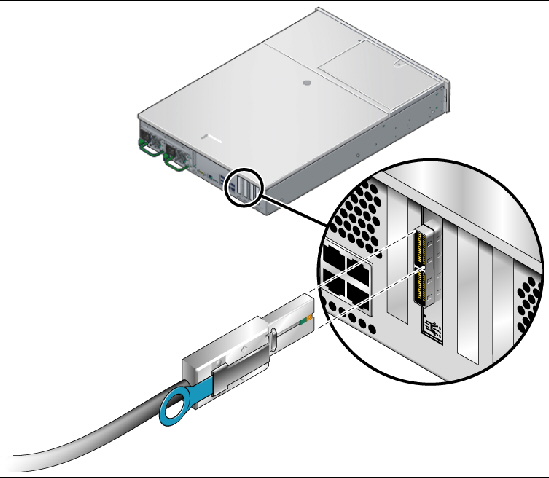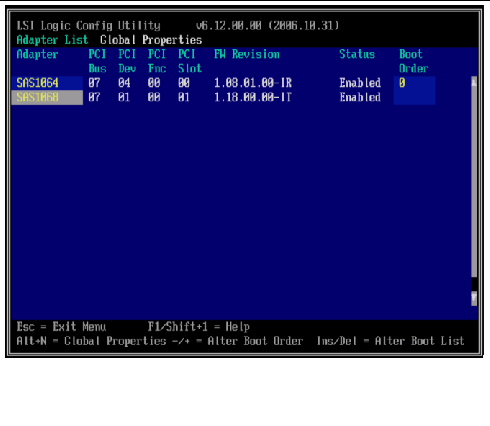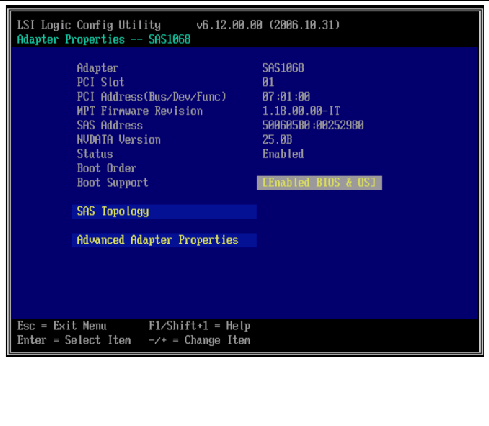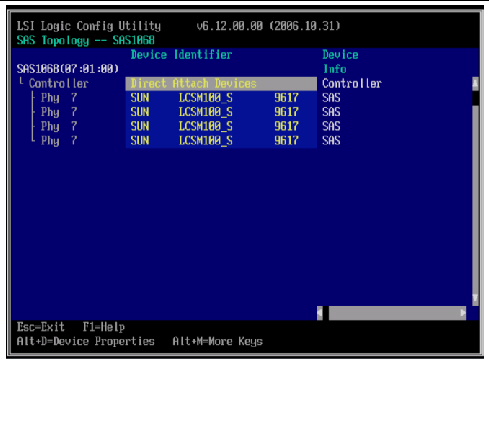| C H A P T E R 2 |
|
HBA Installation |
This chapter describes how to install the HBA, test the installation, and boot from a disk drive connected to the HBA. For more detailed information, see your system installation or service documentation.
This chapter contains the following topics:

|
Caution - Damage to the HBA can occur as the result of careless handling or electrostatic discharge (ESD). Always handle the HBA with care to avoid damage to electrostatic sensitive components. |
To minimize the possibility of ESD-related damage, use both a workstation antistatic mat and an ESD wrist strap. You can get an ESD wrist strap from any reputable electronics store or from Oracle as part number 250-1007. Observe the following precautions to avoid ESD-related problems:
Before you start, read the instructions in this section as well as the installation instructions for the storage devices to be connected to the HBA.
|
1. Read and observe the safety information for this product.
See Safety Agency Compliance Statements.
2. Install the required patch for your OS as described in Downloading and Installing the Oracle Solaris OS Patches.
3. Install the Validation Test Suite software (SunVTS) on the host.
The SunVTS software is available for download at: http://www.oracle.com/technetwork/indexes/downloads/sun-az-index-095901.html#V
| Note - Earlier versions of the Validation Test Suite software are referred to as SunVTS software. Starting with the 7.0ps10 release, the software is referred to as OracleVTS software. |
4. Exit the operating environment.
To inform any mounted users that the system will be going down, use the shutdown command. Otherwise, use the init 0 command. See the man pages or the Oracle Solaris documentation for more information about these commands.
For instructions, refer to the hardware documentation that came with your system.
|
1. Unpack the box containing the HBA and inspect the HBA for damage.
| Note - Leave the HBA in the protective bag until you are ready to install it. |
2. Physically remove the power cord(s) from the system.
3. Remove the cover from the chassis of the system.
4. Disconnect the system from any networks.
Refer to your system installation or service manual for information about mounting details (mounting holes, standoff locking/unlocking, and screws to secure the card).
6. Align the HBA to a PCIe slot, and press down gently but firmly to seat the HBA in the slot.
FIGURE 2-1 illustrates how to insert the SAS HBA in a PCIe slot.
FIGURE 2-1 Installing the HBA Into a PCIe Slot

7. Install the bracket screw, when present, or engage the retention mechanism on the system to secure the HBA to the chassis of the system.
8. Replace the system cover, and reconnect the power cord(s) and any network cables.
10. Connect the mini-SAS cable(s) between the HBA and the external storage or switch.
| Note - The HBA contains two mini-SAS connectors. Each connector contains four PHYs enabling eight SAS lanes to connect to storage. |
FIGURE 2-2 shows the location of the connectors on the HBA.
FIGURE 2-2 Connecting the Mini-SAS Cable to the HBA Connector

The HBA hardware installation is complete.
To test the HBA installation in an Oracle Solaris environment, refer to the following sections:
|
| Note - This procedure is not valid in an Oracle Solaris 10 for x64/x86 environment. Instead, use the format command to verify the installation of the HBA before attempting to use it in an Oracle Solaris 10 for x64/x86 environment. See To Test the Installation Using the Oracle Solaris format Command. |
1. If you have disconnected the power cable, reconnect it.
2. Power on the connected storage device, and then power on the host.
3. Bring the system down to the ok prompt at run level 0.
| Note - If the host starts to reboot, interrupt the reboot process by pressing the Stop and A keys simultaneously. |
4. At the ok prompt, type the probe-scsi-all command to verify that the system recognizes the HBA.
The probe-scsi-all command displays the SCSI devices that are connected to the host, as shown in the following screen example.
This example shows two SAS controllers. The first (sas@2) is the SAS controller resident on the motherboard. The second SAS controller (sas@0) has one disk drive connected (Target 1). The disk consists of two logical unit numbers (LUNs), Unit 0 and Unit 1.
|
Use the following procedure to test the HBA installation using the format command on an Oracle Solaris 10 for x64/x86 platform.
1. Become a root user and type the format command.
2. When prompted, type the number of the disk drive that is attached to the HBA card you just installed and press Enter.
3. Type analyze to select the type of test.
4. Type read to further define the type of test, and then type y to continue.
5. Verify that no error occurred, as indicated by the output line Total of 0 defective blocks repaired.
6. Contact your service provider if an error occurs.
7. Type q twice to quit the test and the Format menu.
|
Use the SunVTS software to test a disk on a newly attached disk array to verify that the HBA is properly installed.
| Note - Refer to the SunVTS documentation to determine whether the host platform is supported. |
| Note - Earlier versions of the Validation Test Suite software are referred to as SunVTS software. Starting with the 7.0ps10 release, the software is referred to as OracleVTS software. |
1. As superuser, open the SunVTS window.
2. From the System Map, select a disk drive that is in an array connected to the SAS HBA.
4. Verify that no errors have occurred by checking the SunVTS status window.
| Note - If problems occur, contact your service provider for assistance. |
5. If no problems occur, stop the SunVTS software.
Your SAS HBA is now ready to run applications.
The HBA uses the Oracle Solaris mpt device driver, which is included in the Oracle Solaris 10 (SPARC or x64/x86) OS.
After booting, install any required patches for the mpt driver. Refer to Software Installation for instructions on downloading and installing mpt driver patches.
|
The BIOS initialization screen is displayed.
2. Immediately press Control-C.
The LSI Logic MPT SCSI Setup Utility menu is displayed.

In this example, the first line (SAS1064) is the SAS controller that is resident on the motherboard. The HBA (SAS1068) is installed in PCI Express slot 01.
3. To change the boot options, use the arrow keys to move the grey highlighted field to the Boot Order field and use the following keys.
4. To change other options, move the grey highlighted field to the appropriate HBA, and press Enter.
Details for the selected adapter are displayed, as shown in the following example.

5. To view the devices attached to this adapter, highlight SAS Topology and press Enter.
The following screen is displayed.

6. In this example, a single SAS RAID array is attached to the adapter. The array has four bonded PHYs.
7. To exit this screen, press the Escape key.
8. Use the arrow key to highlight Exit the Configuration Utility and press Enter.
9. Press any key to reboot the system.
Copyright © 2011, Oracle and/or its affiliates. All rights reserved.